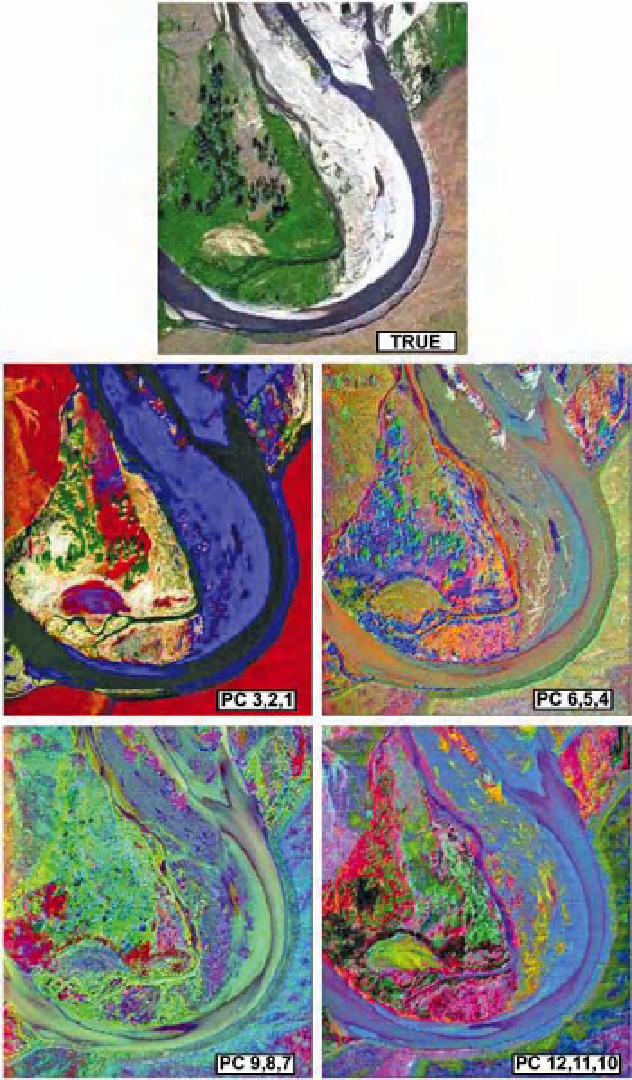Geography Reference
In-Depth Information
Figure 4.6
An example of Principle
Components Analysis (PCA) processed
hyperspectral image components. Starting at the
top is the 'True-Color' image. The second line
shows the PC components 3-2-1, and also the PC
components 6-5-4. The last line shows the PC
components 9-8-7 and 12-11-10. This image is
intended to convey the broad dimensionality
latent in the hyperspectral imagery. As such, the
statistical properties of each new image (for
example variable loadings on each component)
have been excluded. Original imagery courtesy of
Andrew Marcus.
Removal of atmospheric effects and conversion to
reflectance (rather than instrument brightness values)
is required for some advanced statistical-empirical
techniques, such as those that match reference spectra
against measured image spectra in order to classify types
or to measure proportional fractions of types within each
image pixel. As one example, comparison of airborne
hyperspectral imagery of the Potomac River to reference
spectra yielded submerged vegetation maps (Williams
et al., 2003).
Modified spectral unmixing, a technique based onmul-
tiple linear regression, can allow mapping of both depth
and subpixel composition of aquatic benthos (Hedley
and Mumby, 2003). A somewhat similar approach
by Huguenin et al. (2004) characterised depth, sus-
pended chlorophyll, suspended sediments, and coloured

Search WWH ::

Custom Search